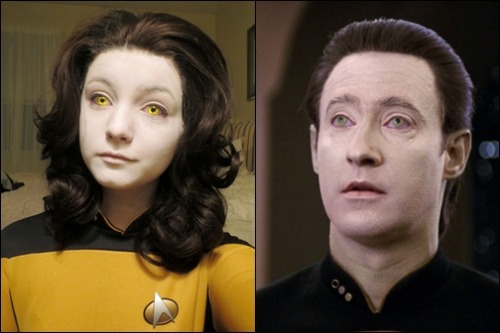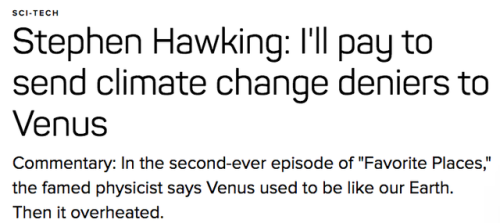I Feel So Goddamn Trapped By Revision And I’ve Been Away From Home For So Long That Every Time Someone
I feel so goddamn trapped by revision and I’ve been away from home for so long that every time someone asks me how I am I want to grab them and shout “I WANT TO SEE MOUNTAINS AGAIN, GANDALF. MOUNTAINS!”
More Posts from Earthbending-sjw and Others
i think the coolest thing would be to see a new color



i put the pics i used for inspiration side by side with mine and. … holy shit
i need the kind of job a movie scientist has, the kind where i can sit in a lab by myself all day and do cool genius things and no one bothers me and it’s perfectly acceptable that i have no social skills
![And So Women [in Wakanda] Are Allowed To Realize Their Full Potential … We’re All Very Specific,](https://64.media.tumblr.com/8c5d75e05bd5def478d0cdc7a348efd9/tumblr_p59za7Dbk61u1llhfo3_r1_500.gif)
![And So Women [in Wakanda] Are Allowed To Realize Their Full Potential … We’re All Very Specific,](https://64.media.tumblr.com/b65b1f94567f28fda1fdfb69e80616bc/tumblr_p59za7Dbk61u1llhfo6_r1_500.gif)
![And So Women [in Wakanda] Are Allowed To Realize Their Full Potential … We’re All Very Specific,](https://64.media.tumblr.com/3791a377c7b9219798f2e9921c685da0/tumblr_p59za7Dbk61u1llhfo4_r1_500.gif)
![And So Women [in Wakanda] Are Allowed To Realize Their Full Potential … We’re All Very Specific,](https://64.media.tumblr.com/dbba1623907d129e8feb03e786351309/tumblr_p59za7Dbk61u1llhfo2_500.gif)
![And So Women [in Wakanda] Are Allowed To Realize Their Full Potential … We’re All Very Specific,](https://64.media.tumblr.com/74862dec24549bc535a7f2f695f3c616/tumblr_p59za7Dbk61u1llhfo1_500.gif)
![And So Women [in Wakanda] Are Allowed To Realize Their Full Potential … We’re All Very Specific,](https://64.media.tumblr.com/1e4d9f0aa7ac7137fa6ff68f3651711b/tumblr_p59za7Dbk61u1llhfo5_r1_500.gif)
![And So Women [in Wakanda] Are Allowed To Realize Their Full Potential … We’re All Very Specific,](https://64.media.tumblr.com/9eee3ec9036831a5948a67c04b45a163/tumblr_p59za7Dbk61u1llhfo7_r1_500.gif)
And so women [in Wakanda] are allowed to realize their full potential … we’re all very specific, very individual, very powerful in our own ways and therefore, very effective and influential. - Lupita Nyong’o
Happy International Women’s Day (03.08.18)
ENFP problems
- people not realizing that you want to be alone, but don’t know how to say it in a nice way.
- always ending up in the middle of arguments because you see both sides, causing your friends to get angry at you for not choosing theirs.
- not being able to stick to one thing because you’ll forget about it later.
- feeling like a “therapist” to people because they always vent to you and ask for your advice.
- wanting to be a leader, but dealing with conflict with your friends stresses you out. So you can’t give constructive criticism.
- your energy comes from people, but too much will overwhelm you. Always being in a cycle of surrounding yourself to isolating yourself.
- wanting to help people, but not knowing how.
- worried that you’re being manipulative all the time.
- not being able to let people go, leading into destructive relationships because you think about how they used to be, and they can be like that again.
- when your social energy is at 0% and you need time alone but you can’t get it.
- when your social energy is recharged and you feel horrible for pushing your friends away.
- getting ideas all the time for random projects, but never going through with it. Leaving a ton of papers all over your desk that you don’t want to get rid of.
- worried you’re not yourself. That you’re just someone that changes around every personality to fit their aura.
(These are just some of my experiences)




Frequently I encounter non Native folks who tell me they think reservations are some form of reparatoins to Natives from the US government. I even had someone close to me tell me they thought reservations were places to “reserve” our cultures.
Where I’m from (South Dakota) reservations were concentration camps where they sent us to die after they stole and colonized all of the land every US citizen occupies. In the early SD Rez days our ppl had to get permission from district agents (white settler men) to get food, fix our homes, or even leave our community to travel to another community on our Rez to visit relatives. We couldn’t hunt cuz they killed millions of our buffalo. If we didn’t get permission from the white settler agent we couldn’t eat, fix our homes or visit relatives because we would be violating US law & could be arrested. Also our cultures & ceremonies were illegal under US law until the Indian Religious Freedom Act in 1978.
So plz educate the ppl you love and care abt because everyone in the USA is living in an illegal settler colony, Indigenous ppl survived their genocide & we’re her to say these settlers never gave af abt us & never will.
~ @FrankWaln
Largest Batch of Earth-size, Habitable Zone Planets
Our Spitzer Space Telescope has revealed the first known system of seven Earth-size planets around a single star. Three of these planets are firmly located in an area called the habitable zone, where liquid water is most likely to exist on a rocky planet.

This exoplanet system is called TRAPPIST-1, named for The Transiting Planets and Planetesimals Small Telescope (TRAPPIST) in Chile. In May 2016, researchers using TRAPPIST announced they had discovered three planets in the system.

Assisted by several ground-based telescopes, Spitzer confirmed the existence of two of these planets and discovered five additional ones, increasing the number of known planets in the system to seven.

This is the FIRST time three terrestrial planets have been found in the habitable zone of a star, and this is the FIRST time we have been able to measure both the masses and the radius for habitable zone Earth-sized planets.
All of these seven planets could have liquid water, key to life as we know it, under the right atmospheric conditions, but the chances are highest with the three in the habitable zone.

At about 40 light-years (235 trillion miles) from Earth, the system of planets is relatively close to us, in the constellation Aquarius. Because they are located outside of our solar system, these planets are scientifically known as exoplanets. To clarify, exoplanets are planets outside our solar system that orbit a sun-like star.

In this animation, you can see the planets orbiting the star, with the green area representing the famous habitable zone, defined as the range of distance to the star for which an Earth-like planet is the most likely to harbor abundant liquid water on its surface. Planets e, f and g fall in the habitable zone of the star.
Using Spitzer data, the team precisely measured the sizes of the seven planets and developed first estimates of the masses of six of them. The mass of the seventh and farthest exoplanet has not yet been estimated.

For comparison…if our sun was the size of a basketball, the TRAPPIST-1 star would be the size of a golf ball.
Based on their densities, all of the TRAPPIST-1 planets are likely to be rocky. Further observations will not only help determine whether they are rich in water, but also possibly reveal whether any could have liquid water on their surfaces.
The sun at the center of this system is classified as an ultra-cool dwarf and is so cool that liquid water could survive on planets orbiting very close to it, closer than is possible on planets in our solar system. All seven of the TRAPPIST-1 planetary orbits are closer to their host star than Mercury is to our sun.

The planets also are very close to each other. How close? Well, if a person was standing on one of the planet’s surface, they could gaze up and potentially see geological features or clouds of neighboring worlds, which would sometimes appear larger than the moon in Earth’s sky.

The planets may also be tidally-locked to their star, which means the same side of the planet is always facing the star, therefore each side is either perpetual day or night. This could mean they have weather patterns totally unlike those on Earth, such as strong wind blowing from the day side to the night side, and extreme temperature changes.

Because most TRAPPIST-1 planets are likely to be rocky, and they are very close to one another, scientists view the Galilean moons of Jupiter – lo, Europa, Callisto, Ganymede – as good comparisons in our solar system. All of these moons are also tidally locked to Jupiter. The TRAPPIST-1 star is only slightly wider than Jupiter, yet much warmer.
How Did the Spitzer Space Telescope Detect this System?
Spitzer, an infrared telescope that trails Earth as it orbits the sun, was well-suited for studying TRAPPIST-1 because the star glows brightest in infrared light, whose wavelengths are longer than the eye can see. Spitzer is uniquely positioned in its orbit to observe enough crossing (aka transits) of the planets in front of the host star to reveal the complex architecture of the system.

Every time a planet passes by, or transits, a star, it blocks out some light. Spitzer measured the dips in light and based on how big the dip, you can determine the size of the planet. The timing of the transits tells you how long it takes for the planet to orbit the star.

The TRAPPIST-1 system provides one of the best opportunities in the next decade to study the atmospheres around Earth-size planets. Spitzer, Hubble and Kepler will help astronomers plan for follow-up studies using our upcoming James Webb Space Telescope, launching in 2018. With much greater sensitivity, Webb will be able to detect the chemical fingerprints of water, methane, oxygen, ozone and other components of a planet’s atmosphere.
At 40 light-years away, humans won’t be visiting this system in person anytime soon…that said…this poster can help us imagine what it would be like:

Make sure to follow us on Tumblr for your regular dose of space: http://nasa.tumblr.com







rest in peace stephen hawking (1942-2018)
me: *meets jj abrams*
me: *hugs jj abrams*
me: that's for star wars
me: *punches jj abrams in the throat*
me: that's for star trek
-
 lovelace0129 liked this · 9 years ago
lovelace0129 liked this · 9 years ago -
 alltheleavesaresticky liked this · 9 years ago
alltheleavesaresticky liked this · 9 years ago -
 comeback-n-hauntme liked this · 9 years ago
comeback-n-hauntme liked this · 9 years ago -
 dillsbury liked this · 9 years ago
dillsbury liked this · 9 years ago -
 xxcosmiccastawayxx-blog liked this · 9 years ago
xxcosmiccastawayxx-blog liked this · 9 years ago -
 kak9000 liked this · 9 years ago
kak9000 liked this · 9 years ago -
 kakaxi333-blog liked this · 9 years ago
kakaxi333-blog liked this · 9 years ago -
 ms645 liked this · 9 years ago
ms645 liked this · 9 years ago -
 realmadastra liked this · 9 years ago
realmadastra liked this · 9 years ago -
 yourdeathisclosesobetterbebrief liked this · 9 years ago
yourdeathisclosesobetterbebrief liked this · 9 years ago -
 findingtheshiny liked this · 9 years ago
findingtheshiny liked this · 9 years ago -
 flightlesskiwi liked this · 9 years ago
flightlesskiwi liked this · 9 years ago -
 soul-swimming reblogged this · 9 years ago
soul-swimming reblogged this · 9 years ago -
 unasomiadora liked this · 9 years ago
unasomiadora liked this · 9 years ago -
 olwen-speaks liked this · 9 years ago
olwen-speaks liked this · 9 years ago -
 jo-version-2point0 reblogged this · 9 years ago
jo-version-2point0 reblogged this · 9 years ago -
 lord-of-the-ringsabode-blog reblogged this · 9 years ago
lord-of-the-ringsabode-blog reblogged this · 9 years ago -
 americanegg liked this · 9 years ago
americanegg liked this · 9 years ago -
 stargazer-scientist reblogged this · 9 years ago
stargazer-scientist reblogged this · 9 years ago -
 stargazer-scientist liked this · 9 years ago
stargazer-scientist liked this · 9 years ago -
 kumara-griever reblogged this · 9 years ago
kumara-griever reblogged this · 9 years ago -
 januaryinjune liked this · 9 years ago
januaryinjune liked this · 9 years ago -
 igorbrandao42 liked this · 9 years ago
igorbrandao42 liked this · 9 years ago -
 fireflyascendant liked this · 9 years ago
fireflyascendant liked this · 9 years ago -
 diddle-insanity liked this · 9 years ago
diddle-insanity liked this · 9 years ago -
 brave-little-corgi liked this · 9 years ago
brave-little-corgi liked this · 9 years ago -
 cyclicprogression liked this · 9 years ago
cyclicprogression liked this · 9 years ago -
 heterophobicgaymotron liked this · 9 years ago
heterophobicgaymotron liked this · 9 years ago -
 sydneycutulle-blog liked this · 9 years ago
sydneycutulle-blog liked this · 9 years ago -
 quitethegospodingaja-blog liked this · 9 years ago
quitethegospodingaja-blog liked this · 9 years ago -
 crippelfx liked this · 9 years ago
crippelfx liked this · 9 years ago -
 couldawouldashoulda liked this · 9 years ago
couldawouldashoulda liked this · 9 years ago -
 big-ol-dyke-420 liked this · 9 years ago
big-ol-dyke-420 liked this · 9 years ago -
 thepriceofbeingawesome liked this · 9 years ago
thepriceofbeingawesome liked this · 9 years ago -
 umbralnex liked this · 9 years ago
umbralnex liked this · 9 years ago -
 neuroglow liked this · 9 years ago
neuroglow liked this · 9 years ago -
 stargeezer liked this · 9 years ago
stargeezer liked this · 9 years ago -
 ohmydearmolly-blog liked this · 9 years ago
ohmydearmolly-blog liked this · 9 years ago -
 notsoprivateparts liked this · 9 years ago
notsoprivateparts liked this · 9 years ago -
 pansinspace liked this · 9 years ago
pansinspace liked this · 9 years ago -
 pestilentmars liked this · 9 years ago
pestilentmars liked this · 9 years ago -
 earthbending-sjw reblogged this · 9 years ago
earthbending-sjw reblogged this · 9 years ago -
 earthbending-sjw liked this · 9 years ago
earthbending-sjw liked this · 9 years ago
Climate Justice Organizer | Dark Academia Enthusiast | Writer
151 posts
